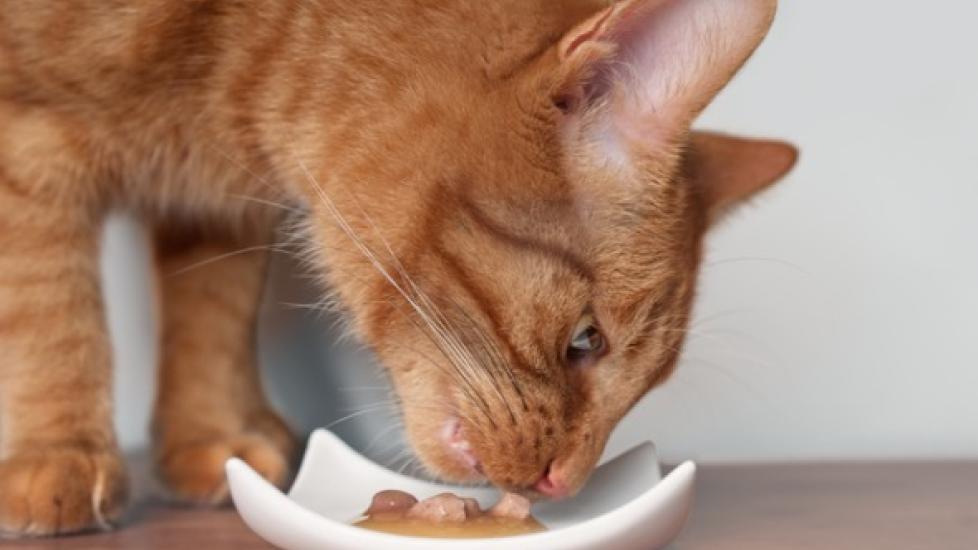What's the Best Food for Senior Cats?
Reviewed and updated for accuracy on November 18, 2019, by Dr. Jennifer Coates, DVM
Digestive, physiology and nutritional needs change as cats gets older, which means that what they ate when they were younger may no longer be ideal.
And with our cats living longer than ever, finding the best nutritionally formulated food for senior cats is even more important.
Feeding an appropriate cat food can maximize your senior cat’s health and longevity.
Qualities of a Good Senior Cat Food
The best foods for older cats tend to have the following:
High Antioxidant Levels
With advanced age comes an increase in the production of free radicals within the body. Free radicals are natural byproducts of metabolism. They contain oxygen and are missing an electron, which makes them highly reactive.
Free radicals essentially steal electrons from whatever is nearby—proteins, cell membranes and DNA, for example. When another molecule is forced to give up an electron, it often becomes a free radical itself, which compounds the problem.
Antioxidants can donate electrons to free radicals without becoming free radicals themselves, thereby breaking the cycle of molecular and cellular damage.
Vitamin E, Vitamin C (citric acid), Vitamin A, carotenoids and selenium are all powerful antioxidants. So a food that includes these will be a great option for a senior cat.
Recommended Pet Products
- Nutramax Proviable Probiotics & Prebiotics Digestive Health Supplement for Dogs & Cats, 160 count$89.98Chewy Price
- Fera Pets USDA Organic Pumpkin Plus Fiber Support for Dogs & Cats, 90 servings$34.95Chewy Price
- All Four Paws Comfy Cone E-Collar for Dogs & Cats, Black, Small$20.24Chewy Price
- Virbac Epi-Otic Advanced Ear Cleaner for Dogs & Cats, 4-fl oz bottle$13.19Chewy Price
Moderate to High Fat Levels
Around the age of 11 or 12, a cat’s ability to digest fat starts to decline. Fats contain more calories per gram than either proteins or carbohydrates do, so this can have a major effect on an older cat’s ability to extract calories (energy) from food.
Diets for older cats should contain a moderate to high level of fat, with the precise amount based on the cat’s body condition score. Skinny cats need a lot of fat to maximize their caloric intake. Overweight cats can do with a bit less.
Adequate Protein
Research has also shown that around 20% of cats over the age of 14 have a reduced ability to digest protein. Combine this with the declining ability to digest fat, and there’s a good chance that, without dietary intervention, a senior cat will lose both fat and muscle mass.
The loss of muscle mass is especially concerning because these individuals are at increased risk of illness and death.
Studies reveal that 15% of cats over the age of 12 have a body condition below the ideal, and cats who are over 14 years of age are 15 times more likely to be skinnier than they should be.
Senior cat food must contain enough protein to maintain a cat’s muscle mass. Extra carnitine (an amino acid) may also help in this regard.
Low Phosphorous Levels
Many older cats suffer from or are at risk for chronic kidney disease (CKD). In the past, veterinarians commonly recommended reduced protein diets for older cats to “protect their kidneys,” but this is no longer the case.
What’s important, however, is to evaluate the phosphorous content of a cat food.
The kidneys are responsible for removing excess phosphorous from the bloodstream, and with CKD, they have a hard time doing this. High blood-phosphorous levels can leach calcium from the bones, make cats feel unwell, lead to more kidney damage and cause other problems within the body.
For these reasons, senior cat foods generally contain reduced levels of phosphorus. High-quality protein sources contain less phosphorous than do those of low quality. Talk with your veterinarian to determine the best protein source and food for your cat.
Omega-3 Fatty Acids
Most older cats suffer from some degree of arthritis. Omega-3 fatty acids are thought to be beneficial in the treatment of arthritis by reducing inflammation and the activity of enzymes that break down joint cartilage.
Feline cognitive dysfunction, which resembles dementia in people, is another common problem for older cats.
Research in dogs indicate that omega-3 fatty acids appear to have some ability to reduce the effects of cognitive dysfunction and dementia. While there have been no studies in cats, there’s a good chance that omega-3 fatty acids could be beneficial.
Cold-water fish oils (salmon, anchovies or sardines, for example) are the best sources of omega-3 fatty acids for cats.
Palatability
And last, but certainly not least, the best food for older cats will smell and taste irresistible in order to stimulate their appetite.
Cats can become extremely finicky as they get older, so I consider it a great success if we can get them to eat a nutritious diet.
If we’re talking about cats who are truly nearing the end of their lives, I think the ideal food for them to eat is whatever they will actually eat. Not only do we want to spoil them when they reach this point, but it can also be difficult to get them to eat anything at all.
So instead of trying to force these cats to eat the most nutritious option, when the end is near, ideal nutrition takes a back seat to any nutrition at all.
Follow Your Veterinarian’s Advice for Your Senior Cat’s Diet
Precise dietary recommendations will vary on an individual basis, particularly if an older cat suffers from a disease that is managed, at least in part, through diet.
Ask your veterinarian to help you determine which food might be best for your cat based on their unique needs.
By: Dr. Jennifer Coates, DVM
Featured Image: iStock.com/Lightspruch




